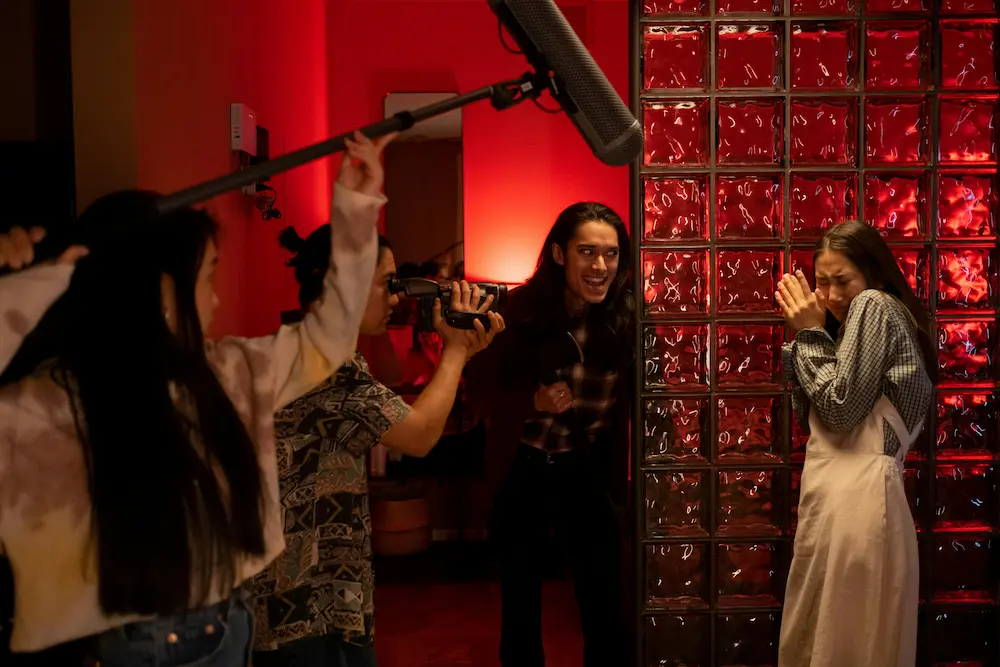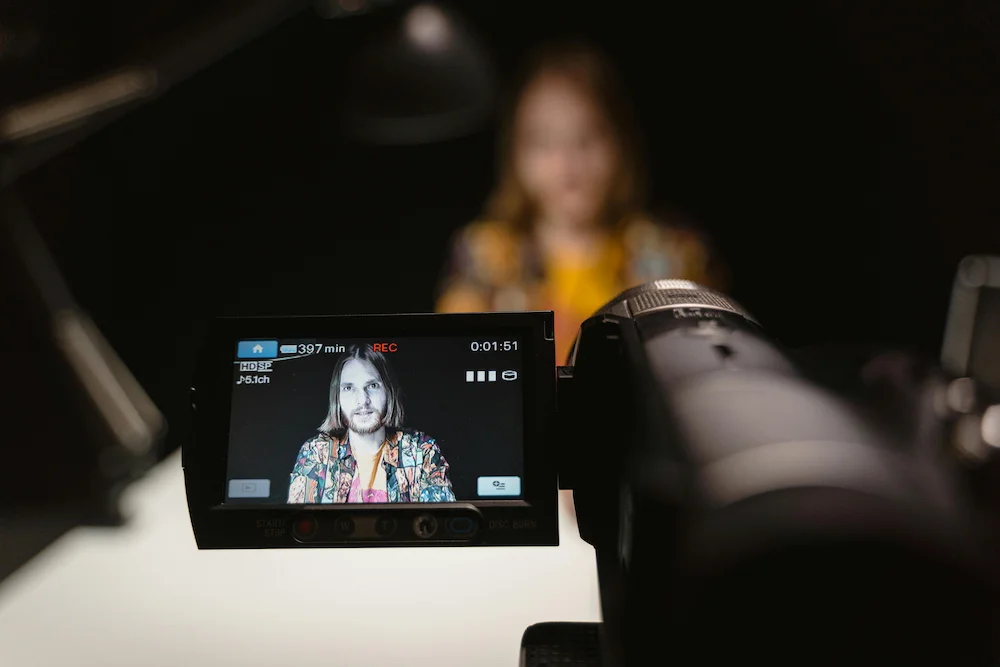What Is On Camera Acting? A Guide to Mastering Techniques
by WriteSeen
On camera acting involves performing directly for the camera, which requires a subtle style different from stage acting. Precision is key; small expressions matter.
It's a craft where framing, timing, and a deep understanding of the camera are essential. As you read on, discover techniques to master this art, enhance your skills, and navigate the industry like a pro. Whether you're a budding creator or an experienced professional, there's always room to refine your on-screen performance.
Understanding On Camera Acting
On camera acting transforms scripts into gripping visual stories. It's not just acting larger-than-life roles—it's about nuanced, realistic portrayals in front of the camera. Your every move, facial expression, and even the way you breathe needs to convey authenticity. Unlike theater, where big gestures resonate, on camera acting calls for subtlety.
Mastering the Screen Presence
- Nuanced Expressions: The camera picks up micro-expressions—a quirk of an eyebrow or a fleeting smile. Embrace them to add depth to your character.
- Controlled Movement: Large, sweeping actions can overwhelm on camera. Focus on precise, controlled gestures that stay within the frame.
- Vocal Control: Your voice should adapt to the nuances of film or television, maintaining clarity without overpowering.
Each frame tells a story, and actors must anchor that narrative through restrained yet impactful performances. Training your eye to the lens while emoting convincingly is essential. This delicate balance sets on camera acting apart, creating an immersive viewer experience. By focusing on the unique demands of on camera work, actors can bring authenticity and intimacy to their roles—one that resonates profoundly with audiences.

Skills Required for On Camera Acting
Acting for the screen requires a unique set of skills distinct from stage performance. Film actors must manage minimalism—making each glance, pause, and gesture impactful. A finely tuned awareness of these elements enhances on-screen charisma.
Essential On Camera Skills
- Micro-Expressions: Consciously control tiny facial movements to reflect complex emotions.
- Scene Continuity: Ensure consistency in emotions and movements across different takes.
- Framing Awareness: Position yourself for optimal camera alignment while delivering a natural performance.
Understanding the technical aspects of filming can also empower actors to feel at ease on set. Familiarity with various shot types—close-ups, wide shots, and medium shots—guides how one portrays a scene. Different camera angles can shift how emotions are read, so adapting your performance to fit each shot enriches the storytelling process.
These skills bring a character to life vividly, captivating viewers while driving a story forward. As actors fine-tune these abilities, they reveal the layers of their craft, showcasing versatility and depth in an industry ever-evolving with new demands.
Techniques for Effective On Camera Acting
On camera techniques enhance your performance by bridging emotional truth with technical know-how. Building a connection with the camera involves understanding and manipulating various elements to present a believable and cohesive character.
Techniques to Elevate Your On Camera Performance
- Focus Techniques: Engage with specific focus points to simulate lifelike interactions.
- Inner Dialogue: Create an internal narrative for your character to maintain depth and motivation in your role.
- Eye Line Management: Coordinate eye lines to suggest seamless communication between characters, even when filming separately.
Once an actor masters these techniques, it boosts their confidence on set. Consider embracing the power of pauses—a well-timed pause can speak volumes on screen. Incorporating these skills enables more polished and impactful performances, driving the narrative and engaging viewers effectively.
Utilizing these techniques transforms your on camera performances from simple portrayals to immersive experiences, capturing audience attention and ensuring your character resonates long after the credits roll.
The Role of Auditions in On Camera Acting
Auditions are a pivotal step in securing on camera roles. They are more than just a chance to showcase talent; they're an opportunity to demonstrate an understanding of the script and offer a glimpse into how you can bring a character to life. Effective preparation plays a key role in distinguishing yourself from the competition.
Key Focus Areas for Auditions
- Self-Tapes: Master digital submissions. Ensure clean, professional visuals that highlight your performance.
- Script Interpretation: Dive deep into the script to elucidate the character's true essence during the audition.
- Adaptability: Demonstrate your ability to take direction and adjust your portrayal swiftly under different delivery styles.
During auditions, professionals assess not only your acting chops but how well you understand film dynamics. This awareness, coupled with personal insight into the character, can significantly influence casting decisions. Applying feedback constructively can enhance your subsequent auditions, refining your craft over time.
With auditions central to the actor's journey, honing the skills necessary to excel in them is crucial. Your ability to interpret a role with minimal input, coupled with technical proficiency in auditions, establishes firm ground for a flourishing on camera acting career.

Navigating the On Set Environment
Navigating the set environment requires a blend of creativity and technical know-how. It’s about understanding your space, effectively communicating with the crew, and adapting swiftly to changes. The set is where your preparations come to life, and your ability to thrive here can set you apart.
Key Elements of On Set Success
- Building Relationships: Foster connections with directors, camera operators, and crew. Strong rapport facilitates smoother communication, enhancing the overall production process.
- Adapting Quickly: Sets are dynamic. Quick adjustments to blocking or camera angles keep the shoot seamless.
- Spatial Awareness: Understand your environment—lighting angles, camera proximity, and space limitations affect performance delivery.
Managing these aspects with finesse ensures that all elements of your performance remain intact. The set rigors, from long hours to unexpected challenges, demand resilience and focus. By staying agile and resourceful, your on screen presence can shine even under pressure.
As actors acclimate to set dynamics, they gain an intuitive understanding that boosts both performance quality and professional credibility. This adaptability cements actors as valuable assets to any production.
Building a Career in On Camera Acting
Crafting a career in on camera acting extends beyond talent—it requires persistence, networking, and continual learning. As actors solidify their skills, it's crucial to strategically navigate the industry's networking landscape.
Strategies for Career Advancement
- Networking: Connect with peers and professionals. Building a robust network opens doors to new roles and collaborations.
- Creating a Professional Reel: Assemble a dynamic reel that showcases your diversity in roles and acting chops.
- Continuous Learning: Stay updated with the industry's latest trends and technologies; immerse yourself in workshops or classes.
Pursuing a career involves more than just seeking roles; it’s about nurturing relationships and developing a unique professional brand. An engaging online portfolio highlights your skills and attracts opportunities naturally. Additionally, leveraging platforms that connect creatives globally can amplify your reach and visibility.
Your journey in on camera acting is shaped by your passion and commitment to continuously evolve. With the right tools and mindset, you can carve a path to fulfilling roles and enduring success.
Challenges Faced in On Camera Acting
Acting on camera is a rewarding yet challenging journey. Understanding and overcoming the hurdles it presents means building resilience and skills that strengthen your career in the long run.
Common Challenges and Overcoming Them
- Performance Pressure: Master relaxation techniques to maintain focus and calmness amidst tight schedules and high stakes.
- Adapting to Critique: View feedback constructively and apply it to enhance your craft, refining each subsequent performance.
- Sustaining Energy: Long shoots require stamina—prioritize adequate rest and nutrition to stay vibrant and engaged.
Every challenge is a chance for growth. Anticipating obstacles and preparing strategies to tackle them assists in navigating the intricacies of on camera acting. Staying ready and adaptable ensures longevity and satisfaction in this dynamic field.
As actors learn to manage these pressures, they bolster not only their capacity to deliver powerful performances but also their resilience and adaptability in an ever-evolving industry.
Conclusion
On camera acting demands precision, presence, and the ability to tell compelling stories with minimal movement. By mastering subtle expressions, scene continuity, and spatial awareness, actors can elevate their performances and leave lasting impressions on screen. The craft is both technical and emotional—success lies in knowing how to blend the two.
As you grow in your career, continual refinement of your technique, adaptability on set, and the ability to respond to direction will distinguish you in a competitive field. Whether you're auditioning, filming, or networking, your approach must be intentional, resilient, and informed by the ever-evolving standards of the industry.
Join WriteSeen to connect with fellow actors, upload and protect your original work, and gain visibility in a professional space built for creatives. It’s where performance meets opportunity—so your best on screen work doesn’t go unseen.
TAGS